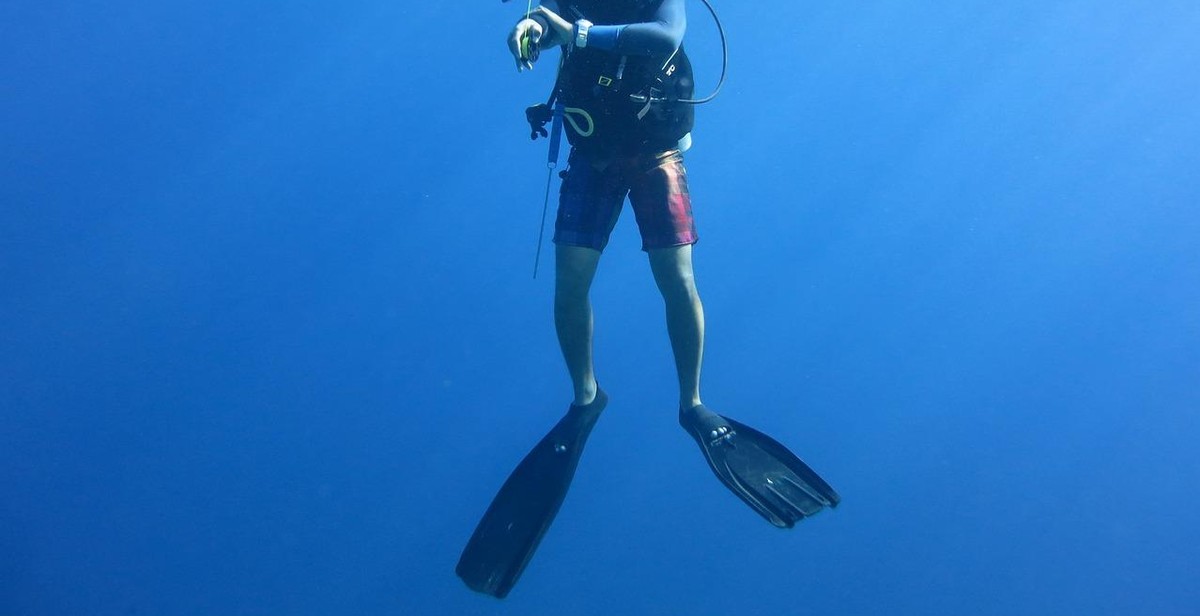How to Dive with Blue Sharks: Safety Measures and Best Practices for an Exciting Shark Dive
As a professional diver with over a decade of experience, I have had the opportunity to dive with various species of sharks, including the magnificent blue sharks. While diving with sharks can be a thrilling experience, it is important to take safety measures and follow best practices to ensure a successful and enjoyable dive.
Why Dive with Blue Sharks?
Blue sharks are known for their curious and gentle nature, making them a popular choice for shark diving enthusiasts. They are also one of the most commonly encountered shark species in open water, making them accessible to divers worldwide.
Safety Measures
- Only dive with reputable and experienced operators who have a proven safety record.
- Ensure that all diving equipment is well-maintained and in good condition.
- Always listen to the dive briefing and follow the instructions of the dive master.
- Never touch or feed the sharks, as this can provoke them and lead to aggressive behavior.
- Stay calm and avoid sudden movements to prevent startling the sharks.
Best Practices
- Use a camera or GoPro to capture the experience, but do not let it distract you from the dive.
- Respect the sharks’ space and avoid getting too close to them.
- Observe the sharks’ behavior and movements to better understand their habits and characteristics.
- Take time to appreciate the beauty and grace of these magnificent creatures.
By following these safety measures and best practices, you can have a safe and unforgettable dive with blue sharks.
The Blue Shark
The blue shark, also known as the Prionace glauca, is a species of requiem shark that can be found in the deep waters of the world’s oceans. They are known for their long, slender bodies and distinctive blue coloration, which fades to white on their underbelly.
Physical Characteristics
Blue sharks are easily identifiable by their sleek, torpedo-shaped bodies and long, pointed snouts. They can grow up to 12 feet in length and weigh up to 450 pounds. Their skin is covered in tiny, tooth-like scales called dermal denticles, which help to reduce drag as they swim through the water.
| Physical Characteristics | Measurements |
|---|---|
| Length | Up to 12 feet |
| Weight | Up to 450 pounds |
| Coloration | Distinctive blue fading to white on underbelly |
Habitat
Blue sharks are found in deep waters all around the world, from the coastlines of North and South America to the waters around Europe and Africa. They prefer cooler water temperatures and are often found in areas where the water temperature ranges from 46-72°F.
Behavior
Blue sharks are known for their curious and sometimes aggressive behavior. They are fast swimmers and are often seen leaping out of the water or swimming close to boats and divers. They are also known to be social animals and will often swim in schools of up to 100 individuals.
Diet
Blue sharks are opportunistic feeders and will eat a variety of prey, including fish, squid, and crustaceans. They are also known to scavenge on dead animals and will sometimes eat garbage or other human waste that has been dumped into the ocean.
- Prey: Fish, squid, crustaceans
- Scavengers: Dead animals, garbage, human waste
Preparing for the Dive
Before embarking on a shark dive, it is crucial to prepare adequately to ensure a safe and enjoyable experience. This section will highlight the key steps to take in preparing for a shark dive with blue sharks.
Choosing a Dive Operator
The first step in preparing for a shark dive is choosing a reputable dive operator. Look for a dive operator that has experience in shark diving and is licensed and certified. Check their safety record and read reviews from past clients to get an idea of the quality of their services. It is also essential to ensure that the dive operator follows the best practices for shark diving and adheres to the regulations set by the local authorities.
Equipment
Having the right equipment is crucial for a successful and safe shark dive. Check with the dive operator to know what equipment they provide and what you need to bring. Essential equipment includes a wetsuit, fins, mask, and snorkel. It is also recommended to bring a dive computer, a safety sausage, and a whistle. Ensure that all your equipment is in good condition and fits comfortably.
Physical and Mental Preparation
Shark diving can be physically and mentally demanding. It is essential to be in good physical health and have basic swimming skills. It is also recommended to practice swimming and snorkeling before the dive. Mentally, it is essential to be calm and relaxed during the dive. Practice breathing exercises and visualization techniques to help calm your nerves. It is also recommended to familiarize yourself with the behavior of blue sharks and the dive plan to help alleviate any anxiety.
By following these preparatory steps, you can ensure a safe and enjoyable shark diving experience with blue sharks.

Safety Measures for Diving with Blue Sharks
Diving with blue sharks can be an exhilarating experience, but it is important to take safety measures to ensure a safe and enjoyable dive. The following safety measures are crucial to follow:
Dive Briefing
Before the dive, it is important to attend a thorough dive briefing. The dive briefing should include information on the behavior and characteristics of blue sharks, as well as the dive plan and safety procedures. It is important to pay close attention to the briefing and ask any questions you may have before entering the water.
Buddy System
When diving with blue sharks, it is important to use the buddy system. This means that each diver is paired with another diver and they are responsible for each other’s safety throughout the dive. The buddy system ensures that if any issues arise, there is someone there to assist and help resolve the situation.
Maintaining a Safe Distance
It is important to maintain a safe distance from blue sharks while diving. This means staying at least 10 feet away from the sharks and avoiding touching or feeding them. Sharks are wild animals and should be treated with respect and caution. It is also important to avoid sudden movements or loud noises that may startle the sharks.
| Equipment | Reason |
|---|---|
| Wetsuit | Provides protection from cold water and potential scratches or bites from sharks. |
| Dive Knife | Can be used to cut fishing line or other hazards that may pose a danger to divers or sharks. |
| Surface Marker Buoy (SMB) | Allows divers to signal their location to the boat and other divers. |
By following these safety measures, you can have a safe and enjoyable dive with blue sharks. Remember to always respect the sharks and their environment, and to prioritize safety at all times.

Best Practices for Diving with Blue Sharks
Diving with blue sharks can be an exciting and unique experience, but it’s important to follow safety measures and best practices to ensure a safe and respectful encounter with these magnificent creatures.
Approaching the Sharks
When approaching blue sharks, it’s essential to do so calmly and slowly. Avoid sudden movements or loud noises that could startle the sharks, which could lead to an aggressive reaction.
It’s also important to keep a safe distance from the sharks, at least 10 feet away, to avoid getting too close to their territory. Keeping a safe distance also allows the sharks to swim freely and naturally, without feeling threatened or cornered.
Interacting with the Sharks
While it may be tempting to touch or feed the sharks, it’s crucial to resist this urge. Feeding or touching the sharks can alter their natural behavior and put both the divers and the sharks at risk.
Instead, observe the sharks from a distance and enjoy their graceful movements. If the sharks approach you, remain calm and still. Avoid direct eye contact, as this can be seen as a threat.
Respecting the Sharks
It’s vital to remember that blue sharks are wild animals and deserve respect and protection. Avoid harassing or chasing the sharks, as this can disrupt their natural behavior and cause stress.
It’s also essential to follow the guidelines and regulations set by the dive operator or the local authorities. These rules are in place to protect both the divers and the sharks.
| Approaching the Sharks | Interacting with the Sharks | Respecting the Sharks |
|---|---|---|
| Calmly and slowly approach the sharks | Observe from a distance, avoid touching or feeding | Avoid harassing or chasing the sharks, follow guidelines and regulations |
By following these best practices, divers can enjoy a safe and respectful encounter with blue sharks, while also contributing to their conservation and protection.

Conclusion
Diving with blue sharks can be a thrilling and unforgettable experience. However, it is important to remember that safety should always be a top priority. By following the best practices and safety measures outlined in this article, you can increase your chances of having a safe and enjoyable shark dive.
Before embarking on a shark dive, it is important to research the dive operator and ensure they have a good safety record. It is also essential to listen carefully to the briefing and instructions provided by the dive guide, and to follow them closely throughout the dive.
Remember to keep a safe distance from the sharks, and to avoid touching or provoking them in any way. Always be aware of your surroundings and the behavior of the sharks, and be prepared to exit the water if necessary.
By taking these precautions, you can have a truly unforgettable experience diving with blue sharks while also ensuring your own safety and the safety of the sharks.
So, are you ready to take the plunge and dive with blue sharks? With the right preparation and mindset, it can be an experience of a lifetime.
